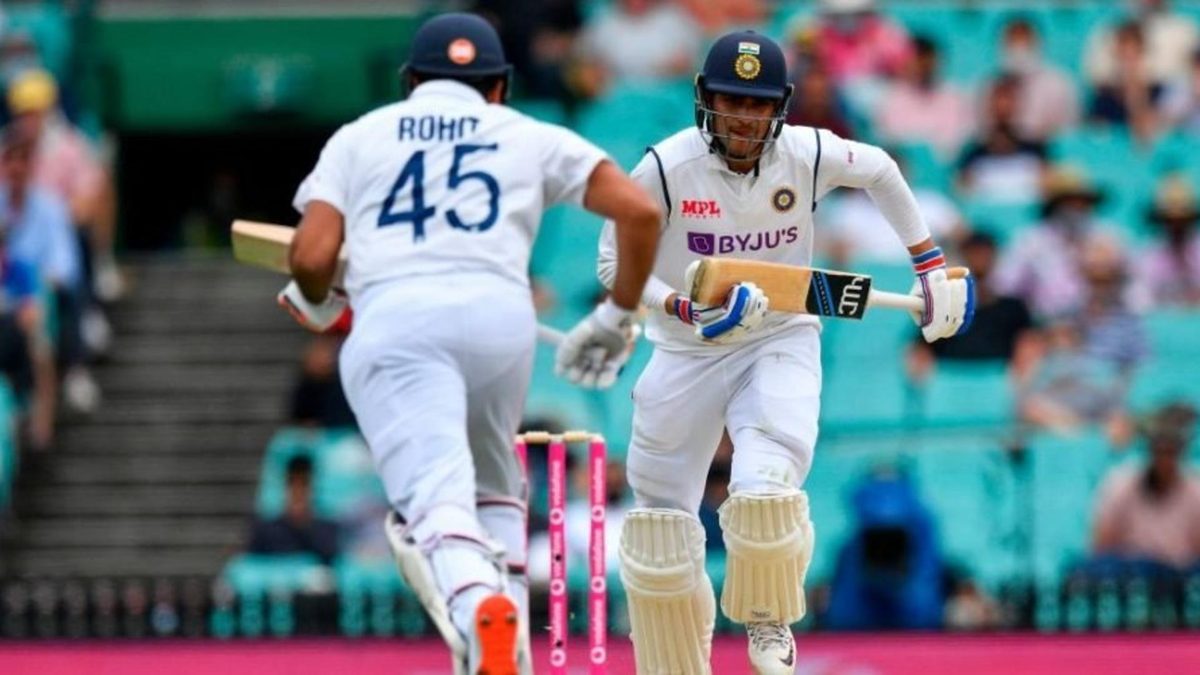
Rohit Sharma and Shubman Gill rode through a brilliant spell from the Aussie quicks to give India a chance, even if minimal, to save the Test, maybe even win it, writes Rohit Sankar.
When Rohit Sharma and Shubman Gill walked out at the SCG in the first innings, a colleague pinged me that “aesthetically, it might actually be Test cricket’s best ever opening partnership”. As someone who was sceptical of Rohit’s handling of the moving red ball – the full-blooded leave off a Dale Steyn delivery heading straight at middle-stump playing in loop on my head – I could jump on the aesthetics bandwagon, but I couldn’t see it working against Mitchell Starc, Pat Cummins and Josh Hazlewood in Australia. Gill is fine, but he’s still fairly raw and he was up against, arguably, Australia’s greatest pace attack. They fared alright in a 70-run partnership before both falling to loose shots, and I was quick to dismiss it as a one-off. But, what do I know?
Two days after the conversation, with a 407-run target staring at them, Rohit and Gill walked out a second time. The conversation had drifted from Australia’s mammoth lead to the abuse hurled by the crowd at Mohammed Siraj right before Australia declared their innings. At the innings break, I was writing up how Ravindra Jadeja could possibly replicate Graeme Smith and walk out to try and save a Test match with a bandaged hand in the twilight hours of day five. It seemed, to me at least, that the Test match would follow a pretty predictable script. But, what do I know?
By the end of the sixth over, there was a close lbw shout, a few plays and misses, a couple of inside and leading edges. The two flamboyant openers were anything but aesthetically pleasing. When Australia didn’t get a wicket despite the suspect start, they turned the screws further – Cummins and Hazlewood started to bowl in tandem, and it was staggering.
You won’t see many better wicketless spells than that new-ball burst from Pat Cummins.#AUSvIND pic.twitter.com/eSi3dWaqcE
— Wisden (@WisdenCricket) January 10, 2021
Hazlewood had Rohit trapped in front, but the opener reviewed to overturn the call. Two balls later, he had Gill befuddled with a sharp in-ducker. Australia reviewed this time. No edge. Not out. Next over he hits Gill on the pads again. Nothing. Cummins turned up to beat Rohit’s edge. Again, nothing.
A few overs later, Cummins would bowl the delivery of the series when he drew Rohit forward with a full one that shaped away late to beat the outside edge. But the edge itself wasn’t found. Fortunate? Hell, yeah. But as any Test opener would vouch for, standing up to a spell of that quality would require more than just luck. Has Cummins bowled a bad spell this series? Possibly not. Was this the greatest wicketless spell ever bowled? Possibly. Possibly not.
What’s important is, at the end of it, India had 46 on the board without losing a wicket. They scored every time a bad ball was bowled. Off the penultimate delivery of Cummins’ mind-boggling spell, Rohit would unleash an expansive drive through cover to fetch a boundary. Two overs before that, Gill had latched onto a leg-side freebie and played a corker with soft hands through point, both for boundaries.
Beautiful bowling from Josh Hazlewood. He’s bowled very tight lines to Gill, and the wicket ball was one of the few deliveries actually in the channel. The wicket increases Australia’s chance of victory to 84%. #AUSvIND pic.twitter.com/oYG9NDgar9
— The CricViz Analyst (@cricvizanalyst) January 10, 2021
The duo squirmed to deal with the late swing, were prepared to bat ugly and ditch the ‘cool guys’ image and importantly, never played when unsure. They made one run more than the 70 they had stitched together in the earlier gig. As a pair, they had made 141 runs, batting through 49.1 overs in the Test match. No other Indian opening pair had scored as much or faced as many balls in a Test match outside Asia since 2008. They did it against an attack each at their respective pinnacles.
Gill, finally, was undone by Hazlewood, but Rohit pushed past fifty, ready to put to bed any concerns about his temperament and technique in the toughest conditions against the best bowlers going. And then, with 12 minutes to go until stumps, he hooked one down deep square’s throat. So, what do I know?








